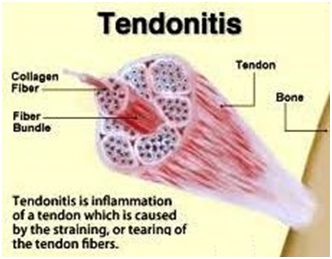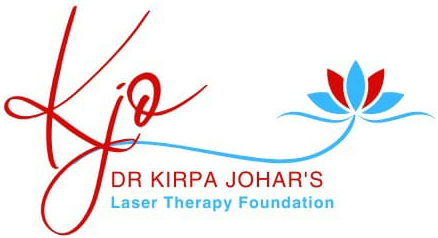What is Tendonitis ?
Tendonitis is inflammation or irritation of a tendon — any one of the thick fibrous cords that attaches muscle to bone. The condition causes pain and tenderness around a joint.
The tendon is surrounded by a sheath that protects and lubricates the tendon. This sheath is lined by a layer of cells called the synovium. Occasionally, the tendon will become inflamed (called tendonitis) or the tendon sheath will become inflamed (called tenosynovitis).
These conditions together are known as tendonitis and result in pain, stiffness and sometimes swelling.

Causes of Tendonitis
Tendonitis can be caused by a sudden injury, the condition is much more likely to stem from the repetition of a particular movement over time, especially when using poor body position. Most people develop tendonitis because their jobs or hobbies involve repetitive motions, which put stress on the tendons needed to perform the tasks. Using proper technique is especially important when performing repetitive sports movements or job-related activities. Improper technique can overload the tendon — which can occur, for instance, with tennis elbow — and lead to tendonitis.•
Signs and Symptoms of Tendonitis
It is most common around your shoulders, elbows, wrists, fingers, back, hips, knees, ankles and heels. The symptoms usually include
• Pain, often described as a dull ache, especially when moving the affected limb or joint
• Tenderness
• Mild swelling

Parts of body affected by tendonitis
Some common names for various tendonitis problems are:
- Tennis elbow
- Golfer’s elbow
- Rotator Cuff Syndrome
- Pitcher’s shoulder
- Swimmer’s shoulder
- Jumper’s knee
When properly treated, it general doesn’t result in permanent damage or disability.
Risk factors for developing tendonitis include age, working in particular jobs or participating in certain sports.
Treatment
Rest
Rest is essential to tissue healing. You may have to stop performing the offending activity that increase pain or swelling for a short period of time.
Although rest is a key part of treating tendonitis, prolonged inactivity can cause stiffness in your joints. After a few days of completely resting the injured area, gently move it through its full range of motion to maintain joint flexibility. You can do other activities and exercises that don’t stress the injured tendon e.g. water exercise may be well tolerated.
Activity Modification
The activity that caused the injury should be modified in such a way as to relieve the stress on the tendon. For example, if running gave you Achilles tendonitis, you may need to reduce your mileage, wear different shoes and then increase your mileage slowly.
Physical Therapy
A physical therapist can teach techniques to stretch the affected tendon after it has healed.He or she can also assess your body mechanics and teach you better ways to perform the activities that give you trouble.
Splints
Sometimes splints are used to keep the affected joint in alignment during activities so stress is taken off the tendon (such splints and wraps are available for tennis elbow). Splints may also be used during the initial resting period to allow the tendon to heal.
Corticosteroid
Cortisone injections are sometimes used to assist in the treatment of tendonitis.
Surgery:
Rarely surgery may be needed to relieve the symptoms of tendonitis. Surgery would also be necessary if the affected tendon tore or ruptured.
Low Level Laser Therapy Treatment for Tendonitis
LLLT is the application of red and near infrared light over injuries to stimulate cellular repair. LLLT has a powerful anti-inflammatory effect as well as a healing effect on the inflamed tendons and surrounding inflamed soft tissues.
By improving circulation and increasing cellular repair functions LLLT provides an environment for your body’s own natural healing processes to be activated and restored. Once normal immune processes are restored, the excessive inflammation is reduced and healing can begin.
- LLLT does not exert any physical force on the affected tendon as manipulation of the injured tendons just aggravates the problem
- LLLT stimulates blood flow and lymphatic drainage, improved delivery of O2 and nutrition to the area, oxygen utilization, removal of oxygen-free radicals and other waste products, and tissue healing.
You will be encouraged to move the affected area within range of movement/pain but not exert stretch or force during the healing phase.
The end result is resolution of inflammation and restoration of healthy tendons and local soft tissues. Once tissues are healed, pain is eliminated and normal range of motion and function is restored. Then muscle and tendon strength and flexibility can be addressed with graduated exercises and stretching.
LLLT has no known side effects, is safe and effective.
